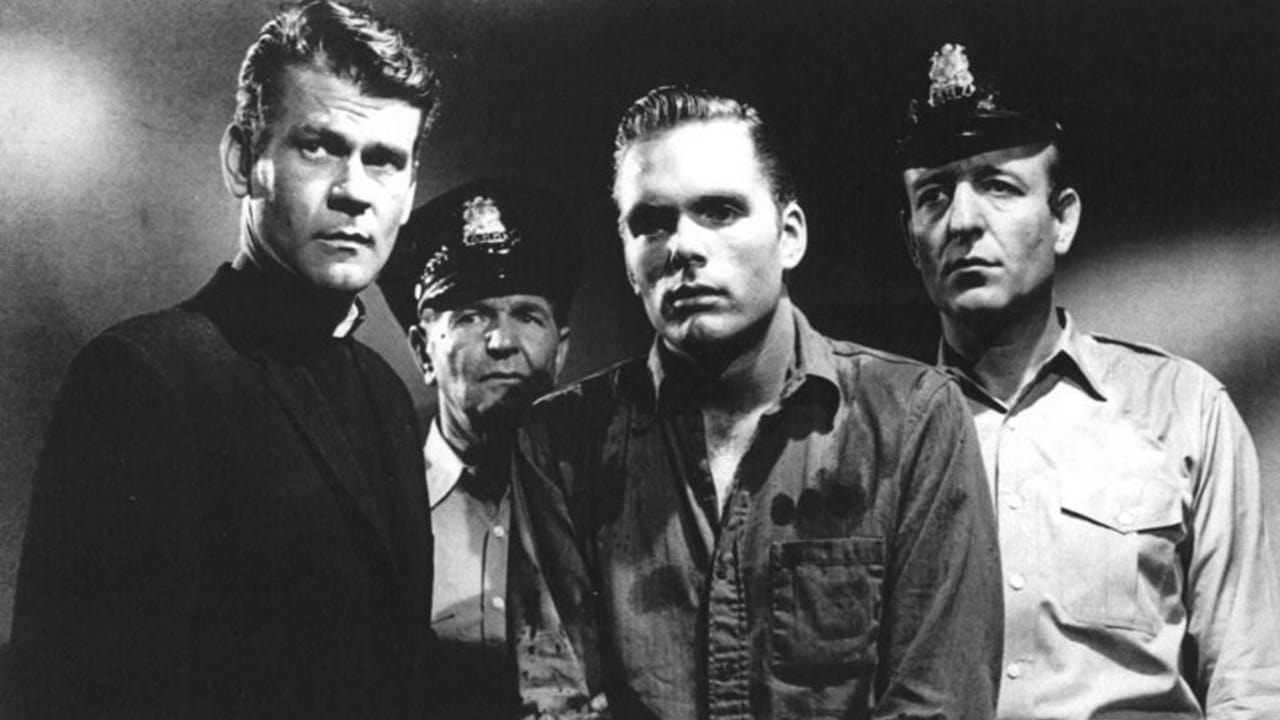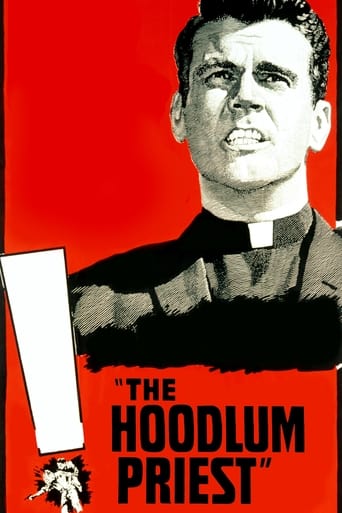

This Movie Can Only Be Described With One Word.
... View MoreOne of the best films i have seen
... View MoreJust intense enough to provide a much-needed diversion, just lightweight enough to make you forget about it soon after it’s over. It’s not exactly “good,” per se, but it does what it sets out to do in terms of putting us on edge, which makes it … successful?
... View MoreOne of those movie experiences that is so good it makes you realize you've been grading everything else on a curve.
... View MoreA visit to the other side of the tracks is what to expect here keeping mind that this could be the story of anyone young, misguided and lost without direction and surrounded by temptation and hopelessness. With that mind, watch how everything can wrong (Murphy's law) and then some. This movie also takes us to the fine line of choice and how in a moment of weakness or impulse, one bad choice can bring your whole life crashing down. Can't happen to you...you say? That's who visits with first. Also anyone that has lived knows the truth of this statement. How many times have we all said to ourselves: there go I but for the grace of God? The movie drives this point home too. Ten cents or ten million, all face the same problems and at the same time all of us have the same remedy too i.e. HOPE. If you add prayer to that and a sincere effort, you can rise above just about anything. Why? We were not put here to be defeated. Some really good dialog and scenes that try to reach for your emotions. Let them! One more thing. If someone has nothing and they offered anything and that offer should be respected even if your ...
... View MorePerhaps if the halfway house the Hoodlum Priest envisioned as a way of diverting ex-cons away from criminality and recidivism had been built in time, Keir Dullea wouldn't have died in Missouri's gas chamber in one of most memorable execution scenes ever. The movie starts with Dullea's release from prison and reunion with a former partner in crime. They plot a robbery of a St. Louis strip joint in a seedy part of the city. Don Murray as the Hoodlum Priest offers another avenue for Dullea, and it looks good for him after he meets the daughter of one of the city's wealthy families at a cool poolside party where Murray solicits contributions for the nation's first halfway house from St. Louis's wealthy matrons. Pushing the other side of the agenda is not law enforcement but a newspaper reporter who's job is to sensationalize crime in order to sell more papers and generate ad revenue. It's all well-captured and presented, though a bit preachy at times, in authentic scenes from the streets of St. Louis by should-be-better-known director Irvin Kershner.
... View MoreAfter having just viewed a nice sharp B&W 16mm theatrical print of this fine film, I must say; Don Murray's production of HOODLUM PRIEST really deserves to be given serious consideration by cinephiles looking for hard-hitting drama about an important social issue that still has relevance today. It surpassed my expectations for a film having a title better suited to cheaper exploitation fare. Even within a very tightly budgeted film, ace cinematographer Haskell Wexler was able to impart some really nice arty touches with seedy shadowy lighting schemes and the occasional off-kilter frame compositions. There were solid performances all around with the two standouts being Don Murray and Kier Dullea. Irvin Kirshner proves once again that he is quite a solid director with a marked talent for mixing heavy drama with realism. The near final scene in the prison is such a gut-wrenching experience, you'll feel as if you are really there witnessing a mind-numbing horror played so effectively by the young Dullea. So, please dismiss the weaker reviews here and seekout HOODLUM PRIEST, a real hidden gem.
... View MoreThe Jesuit priest, Charles Dismus Clark, must have been an interesting guy. He went about doing good, or trying to, and hung with thieves and other young criminals, trying to reform them with kindness. He himself came from a terrible background, poverty, coals mines, and union conflicts.This movie leaves you wondering what he was like. Hardly any of it, outside the fleshless skeleton of narrative facts, is believable. The story is mostly a tract in favor of humanism. It was co-written by Don Murray, the actor who plays Father Clark. The priest is shown as, perhaps a little naive and socially clumsy, but otherwise without flaws, unshakable in his faith in God and in his boys.But even Mother Teresa had her unpleasant traits. Reporters who tried to interview her might find themselves scrubbing pots and pans while talking to a stern and demanding subject. Father Clark died in 1963, having devoted most of his life to helping reform recently released prisoners in what would now be called a Halfway House but was at the time a new concept. But he was a man, not a saint.The real story is probably fascinating but the movie is awkwardly written. Clark gets to give a couple of speeches along the lines of Father Flanagan in "Boy's Town." Some speeches are also given to Larry Gates as Louis Rosen, a high-end Jewish lawyer who discovered that his interests were parallel to those of Clark. Clark is close to many of his released inmates and was evidently told of some of their criminal plans before they were carried out -- not during confession, so privilege doesn't apply. But if Clark mentioned this to the police, he'd lose the trust of his wards and be unable to talk them out of other illegal enterprises. That makes him particeps criminis, doesn't it? Of course, undercover policemen are in the same bind. The moral conundrum is mentioned in passing but not explored.On the plus side, neither Clark nor Rosen are shown as sanctimonious or sentimental in any blubbering kind of way. And the other side of the argument is presented concisely. Clark may be opposed to capital punishment and so are Rosen and the governor of Missouri, but the governor can't pardon the condemned kid (Kier Dullea) because the voters elected him to uphold the law, and the law requires that Dullea be gassed.There's an awful scene on death row. First, Dullea is visited by the rich girl he was getting to know before he committed homicide. Then we are taken in graphic detail through the process of the execution itself. The camera remains in the chamber with the terrified Dullea as the gas is released and Dullea struggles and dies. There weren't many execution scenes in the movies when this one was released but now they've become almost de riguer. It's a pretty sickening tendency. Some of us get a thrill out of seeing others of us destroyed. There's a name for that in psychology.Murray, for all his good intentions, isn't the right actor for the part of Father Charles Dismus Clark. Don Murray is a middle-class urbanite burdened with problems, as in "The Bachelor Party" and "Hatful of Rain." Here, his grammatical transgressions aren't really convincing and his secular sermons are mannered.For its time it was something of a shocker. The seedy neighborhoods of St. Louis are niftily captured by photographer Haskell Wexler. The released inmates, however, look very 1950-ish. They all seem so clean, so neat, so white. The moral position of the movie anticipates the 1960s, which converts the perp into the vic. The villain is society, as represented by a skanky reporter who fights every move Clark tries to make. It was a necessary corrective to the prevailing notions of causality at the time -- bad blood, willfulness, the devil. What's needed now is the synthesis. At the moment we can't seem to find it. Political debates are interrupted by wild applause, by cheers, when capital punishment is brought up. Maybe the whole dialectic is misguided. We never find the synthesis, just swing from pole to pole like brachiating apes.
... View More